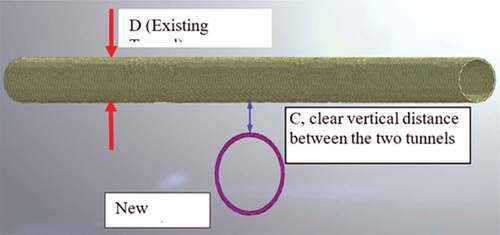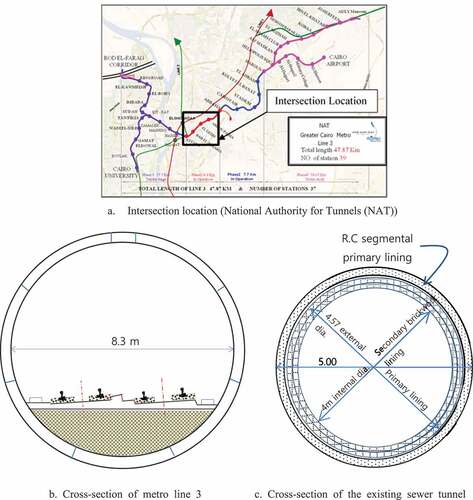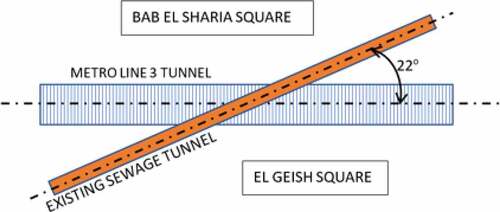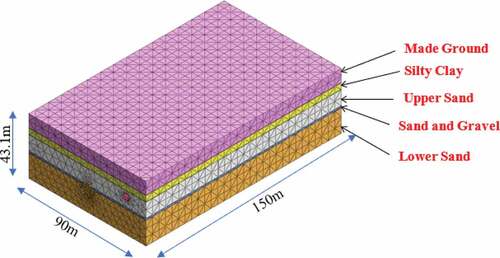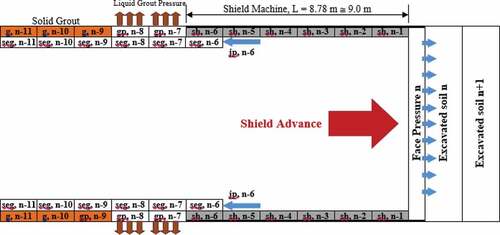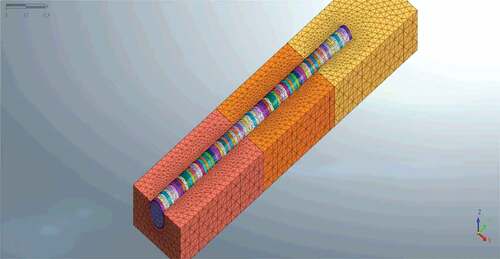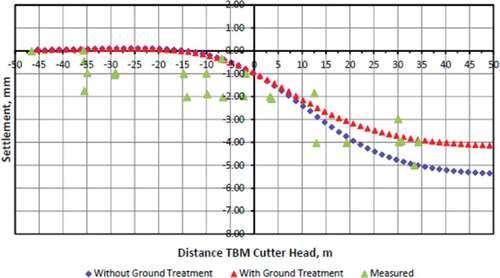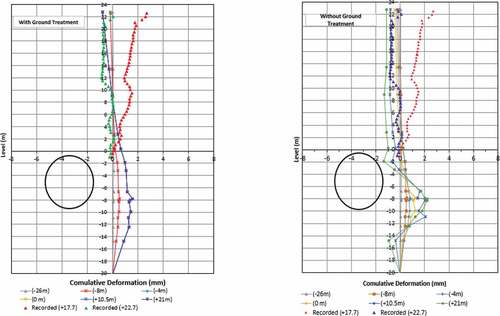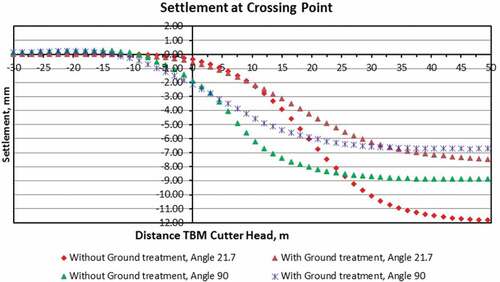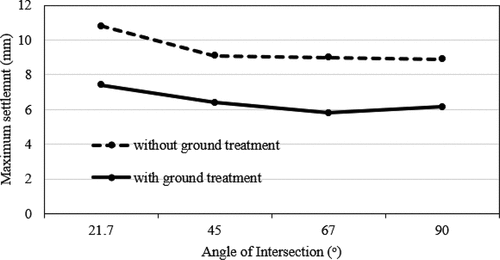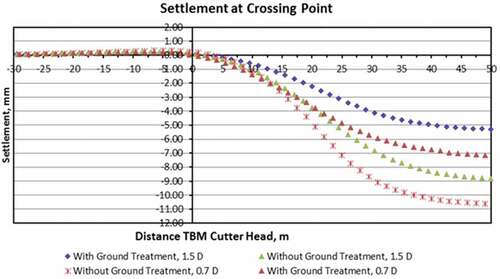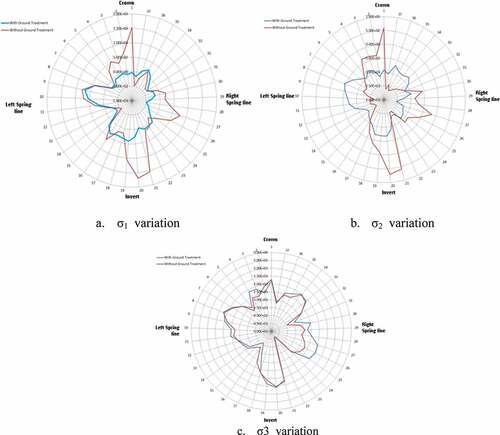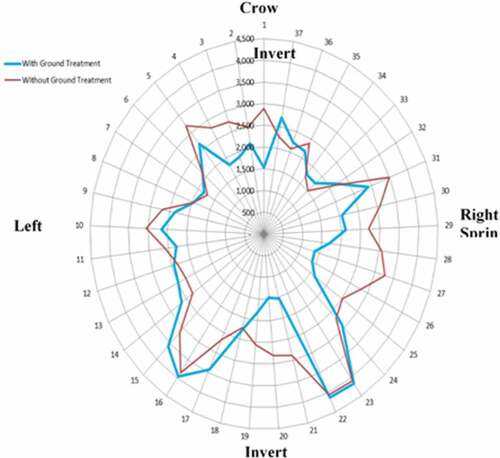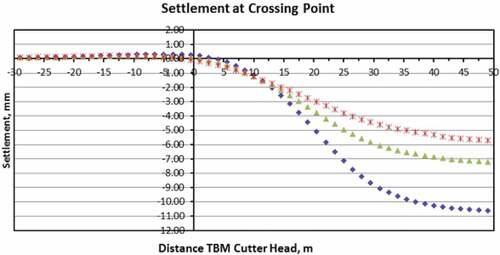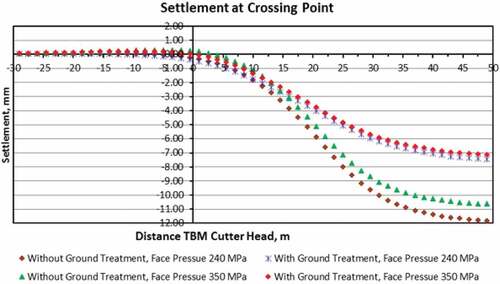Figures & data
Table 1. Sewer tunnel description at the crossing location
Table 2. Slurry parameters for the used shield machine
Table 3. TBM working parameters
Table 4. Soil design parameters at tunnel crossing
Table 5. Material properties of concrete, shield & grout
Table 6. The maximum settlement at the crossing point for various crossing angles, φ
Figure 11. The vertical clearance, C between the two crossed tunnels (C is related to the existing tunnel; 1.5D = 7.5 m)
